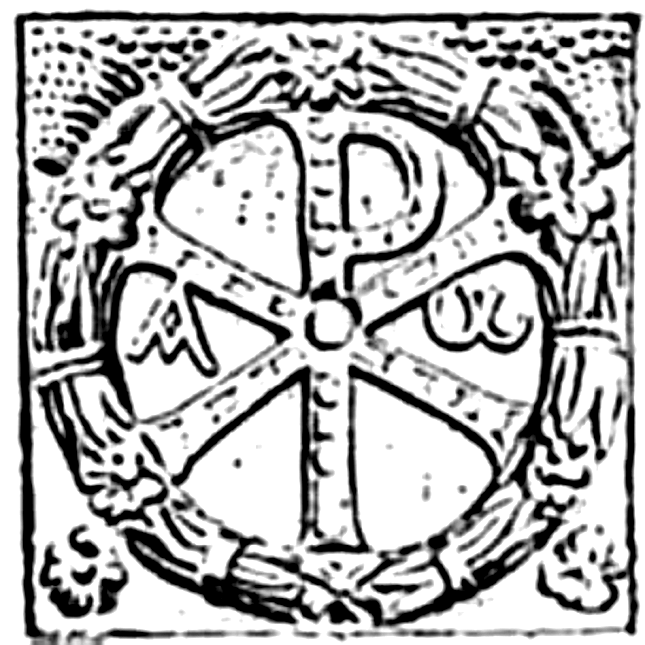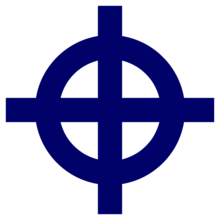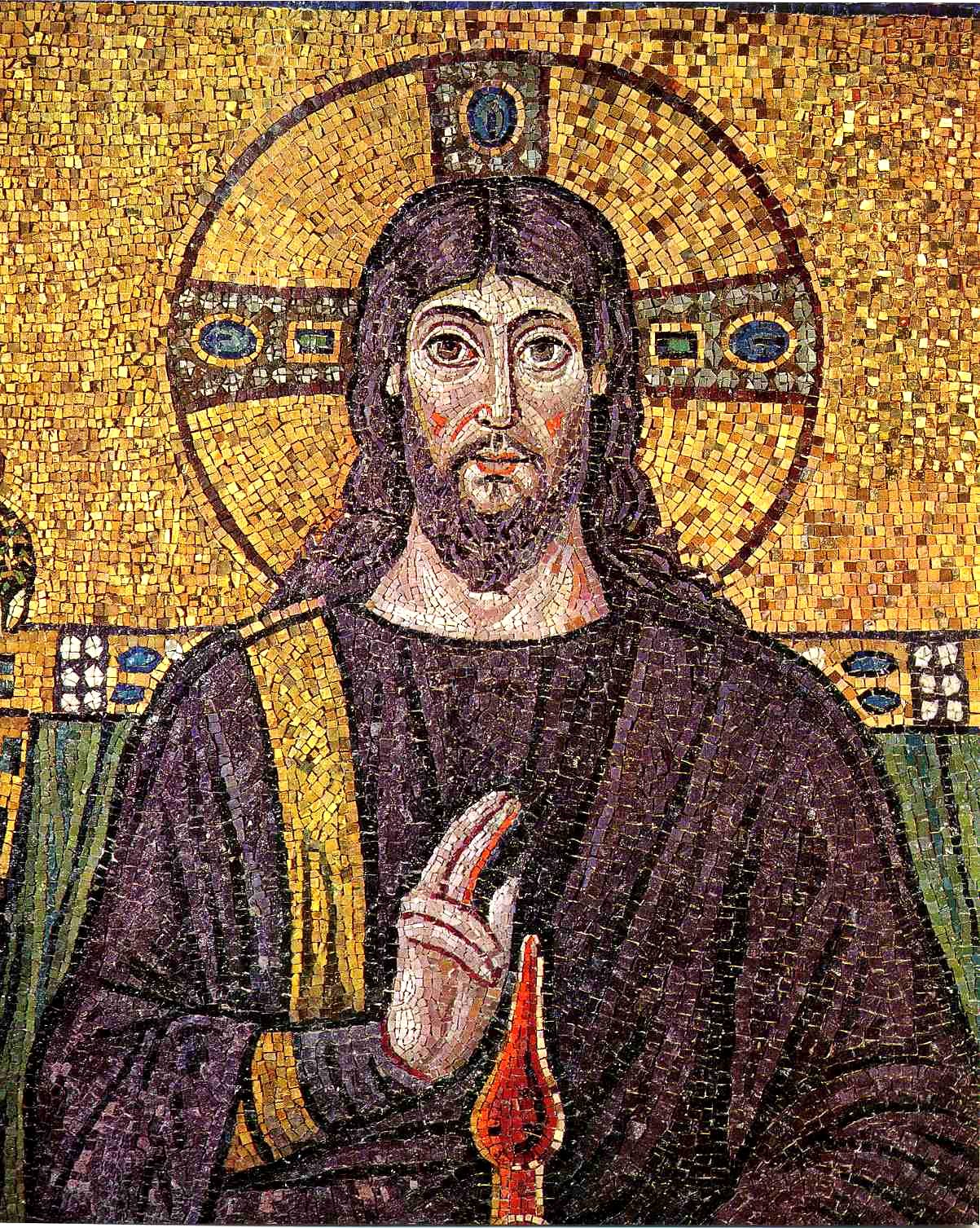Proto Türkçe'de savaşçı simgesi + (OK) işaretidir. O tamgasi (okunusu ONG, ON) ise "başarılı" anlamındadir. Sayi olarak 10'a eşittir. Türkce'de ayni kelimedir (Kazim Mirsan).
Yani Başarılı Savaşçı = O + tamgalarindan oluşur.
Bu iki Tamgayi nerelerde görmekteyiz?
Mesela:
* Ötzi'nin dövmelerinde + ve 10 Çizgi = BaşarılıSavaşçı
* Saymali Tas Petrogliflerinde
* Nagy Szent Mikloş hazinesinde bulunan kaplarda, Macaristan
* Rowtor Rocks, Derbyshire (England)
* Central New Mexico
* West New Mexico
* Colorado'nun Güneybatisinda
* Kore'de, Cheonjeon-ri petroglyphlerinde
* Mississippi Nehri yakınında
* Great Plains, ABD'de
* Hristiyanligin Labarum isaretinde çok iyi bir sekilde, diger haçlarında da. (In hoc signo vinces = bu isaretle muzaffer olacaksın) Bu cümlenin, yani Labarum işaretinin hikayesi çok önemlidir: Bizans Krali Büyük Konstantin askerlerine Labarum işaretini kalkanlarinin üstüne boyamalarını emretmiştir, çünkü bu Tamgayi savastan kisa bir süre önce rüyasinda görmüştür. Böylece kalkanlarında Başarılı Savaşçılarin simgesi olan askerler rakiplerini yenmişlerdir. Konunun geniş anlatımı icin Milvian Köprüsü Savasina bakabilirsiniz.
* Quetzalcoatl kalkaninda görürüz
* Saint Vincent, British West Indies'de de
* Nato simgesinde
ve tabii ki daha birçok yerde.
O Tamgasini da bizim "Hale" dediğimiz kutsal insanların başının etrafında görürüz. Başarılı insan anlamında.
Simdi Türk kültüründeki en ufak askeri birlik olan manganin niye 10 kisi oldugunu hala bilmiyorum diyorsan, yaziyi bir kere daha oku.
-Resimler asagida- (Cogu Wikipediadan alinmistir)
******
Ein erfolgreicher Krieger war schon immer einer, dessen Wort Gewicht hatte. In den früheren Gesellschaften war er ein guter Soldat, Commander und Häuptling.
Das Zeichen auf Prototürkisch für einen Krieger ist: + (Ok=Pfeil) Zeichen. Die Thamga O (ONG, ON) bedeutet „Erfolg, erfolgreich". Der Name der Zahl 10 ist auch On im Türkischen. On = 10
Das heißt kurz: O + <=> ON OK <=> Erfolgreicher Krieger
Wo sehen wir diese Thamgas (Prototürkische Petroglyphs)?
Zum Beispiel:
* Auf Ötzis Tattoos -> Zeichen + und 10 Striche = Erfolgreicher Krieger
* Auf Saymali Tas Petroglyphs (Mittelasien)
* Bei Nagy Szent Mikloş Schatz - Ungarn
* Auf Rowtor Rocks, Derbyshire (England)
* In Central New Mexico, USA
* In West New Mexico, USA
* In Südwest Colorado, USA
* In Korea, Cheonjeon-ri petroglyphs
* in Great Plains, USA
* Oder im Zeichen "Labarum": (In hoc signo vinces=deutsch: „In diesem Zeichen wirst du siegen“) Es ist eine wichtige Geschichte für unser Thema: (Laut wikipedia.de) "Nach der Schilderung des christlichen Geschichtsschreibers Lactantius ließ Konstantin seine Soldaten vor der Schlacht an der Milvischen Brücke 312 ein Staurogramm (Labarum-UA) auf ihre Schilde malen. So waren sie auch dann am Ende des Krieges „erfolgreich“".
Aber Achtung:
Ein altes und erprobtes Symbol auf den Schilden der Armee -das aus Asien kommt- wäre eher denkbarer für einen Sieg, als ein Zeichen des damals noch nicht so erfolgreichen und nicht so kriegerischen Volkes (Christen). Oder?
Wir machen weiter:
wo wir sie noch sehen:
* auf dem Schild vom Quetzalcoatl (Südamerikanische Gottheit)
* in Saint Vincent, Britisch West Indies
* In der Nähe des Flusses Mississippi
* Nato Zeichen
und natürlich bei vielen anderen Ortschaften, die ich hier vom Platz her nicht nennen kann.
Und:
Wir sehen immer ein O (Heiligenschein) bei den religiösen Figuren - als Zeichen für einen "erfolgreichen" Menschen, nicht wahr?
Eine extra Info: die kleinste türkische Militäreinheit besteht (seit Jahrtausenden) aus 10 Soldaten. 10 (on) Krieger.
Noch Fragen?
Siehe Bilder unten (Quelle: die meisten sind aus Wikipedia)
*******
A Successful Warrior was always a man, whose Words were important. In old societies he was always a Soldier, a Commander and a Chieftain.
The Prototurkish Sign (Thamga) for a Warrior is + (its name is OK, meaning arrow). The sign O (Turkish ONG, ON) means success, successful. The name of the number 10 ist ON, too.
Shortly: O + mean = ON OK = (a) successful Warrior
We see these Signs (Thamgas) all over the world:
For instance:
* On Ötzi’s Body as Tattoos -> The sign + und 10 (ON) Lines = Successful Warrior
* On Saymali Tas Petroglyphs (Middle Asia)
* By Nagy Szent Mikloş Schatz Treasure - Hungary
* On Rowtor Rocks, Derbyshire (England)
* In Central New Mexico, USA
* In West New Mexico, USA
* In South West Colorado, USA
* In Korea, Cheonjeon-ri petroglyphs
* in Great Plains, USA
* Or in Labarum Sign: („In hoc signo vinces“ means „Under this sign, you will win“) According to wikipedia: "On the evening of October 27, 312 AD, with his army preparing for the Battle of the Milvian Bridge, the emperor Constantine I claimed to have had a vision which led him to believe he was fighting under the protection of the Christian God....Constantine did not know the meaning of the apparition, but on the following night, he had a dream in which Christ explained to him that he should use the sign (LABARUM-UA) of the cross against his enemies".
With a new sign against enemies? I don’t think so.
It must have been a proven sign (like O and + from Asia) instead of an inexperienced one (that of not warlike Christians).
Furthermore we see these signs:
* On the Shield of Quetzalcoatl (Southamerican God)
* in Saint Vincent, Britisch West Indies
* Nearby Mississippi River
* Nato Sign
and of course many more places I can’t write down.
And O Thamga we see always around the head of a holy person => Halo (Nimbus).
Why? According to this thesis: a successful one, isn't it?
But an info i have: the smallest Turkish military unit has (since thousands of years) 10 Soldiers. 10 (ON) Warriors.
Any questions?
Look at the pictures below (Source: the most of them from Wikipedia)
Book Sources/Kaynak Kitaplar/Buchquellen
* Easy Field Guide to Southwestern Petroglyphs
* Petroglyphs - Sabra Moore
* The Turks on the Rock / Served Somuncuoglu
* Petroglyphs of Saint Vincent/British West Indies
Book Sources/Kaynak Kitaplar/Buchquellen
* Easy Field Guide to Southwestern Petroglyphs
* Petroglyphs - Sabra Moore
* The Turks on the Rock / Served Somuncuoglu
* Petroglyphs of Saint Vincent/British West Indies
 |
| Kugelkreuz-Globuis Cruciger-Hac ve Dünya Simgesi |
 |
| Original crest of the Irish Football Association-Irlanda Futbol Federasyonu |
*
 |
Labarum Irish Wheel Cross-Tekerlekli Hac |
 |
Quetzalcoatl-Kalkani-Schild-Shield |
Kanishka casket-Buddha, Brahma, Indra-2. Century-2.JH,-2nciYY |
 |
| Apollo w/ Halo-Apollo mit Heiligenschein-Haleli Apollo-late 2nd C. 2nci yy. |
 |
| ChristusRavenna-RavennaliIsa |
 |
| NATO-OTAN |
 |
| Saymalitas-MiddleAsia-TausendeJahrealt |
 |
| GreatPlains-USA-AWarrior-Savasci-Krieger |
 |
| CentralNewMexico |
 |
| BritishWestIndies |
| AsnaesKirke-Denmark-AsnaesKilisesi |




No comments:
Post a Comment
Note: Only a member of this blog may post a comment.